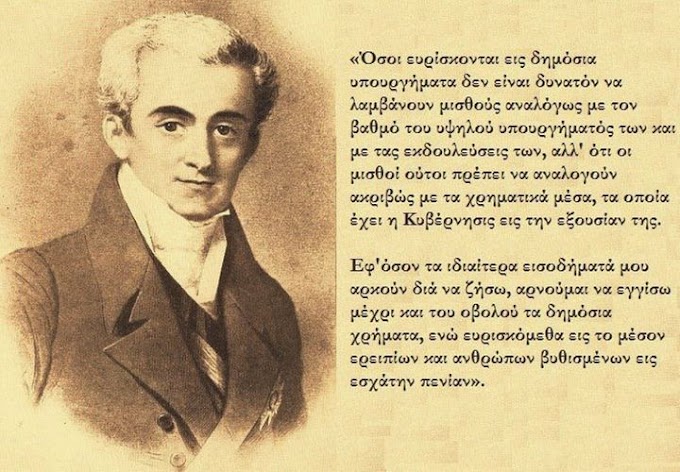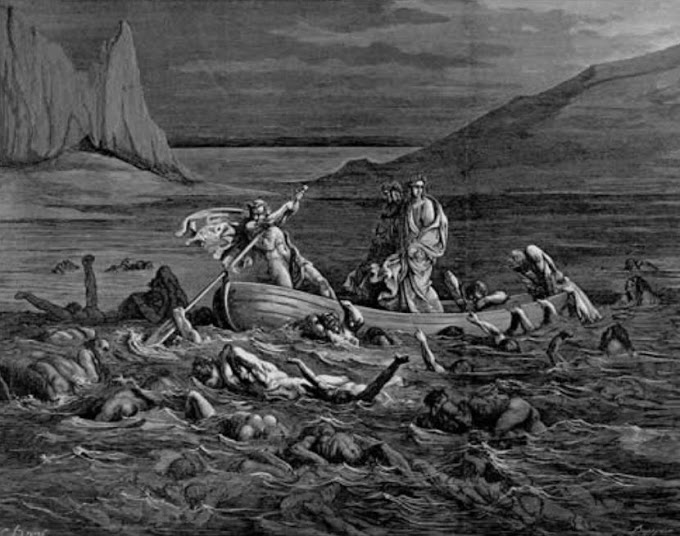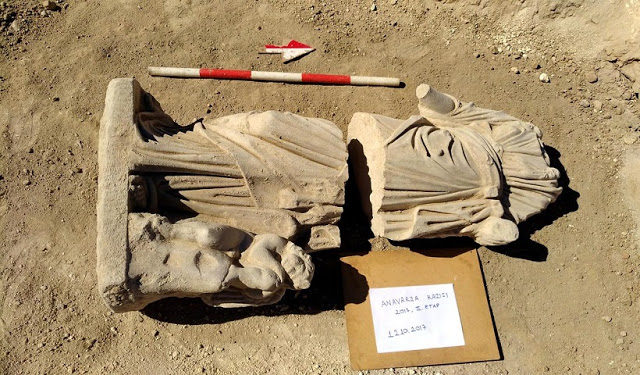Τι αποκαλύπτει νέα έρευνα
Η βία ήταν εξαπλωμένη στη νεολιθική αγροτική κοινωνία της Ευρώπης του 6000-2000 π.Χ., η οποία υποτίθεται πως χαρακτηριζόταν από ειρηνική συνεργασία.
Ποια η εξήγηση.
Η βία και ο πόλεμος είχαν εξαπλωθεί σε πολλές νεολιθικές αγροτικές κοινωνίες της βορειοδυτικής Ευρώπης, αποκαλύπτει μια νέα διεθνής επιστημονική μελέτη, που καλύπτει την περίοδο μεταξύ 6000 - 2000 π.Χ. (εποχή εξάπλωσης της γεωργίας στη Δύση) και φαίνεται να καταρρίπτει τον μύθο περί ειρηνικών κοινωνιών. Ο ανταγωνισμός για την εξασφάλιση γης κατάλληλης για καλλιέργεια πιθανότατα αποτελούσε μια από τις βασικές αιτίες για την ενδημική βία.
Η βιοαρχαιολογική ανάλυση σκελετών από 2.300 πρώιμους γεωργούς από 180 διαφορετικές τοποθεσίες σε Γαλλία, Γερμανία, Βρετανία, Δανία, Σουηδία και Ισπανία δείχνει ότι πάνω από ένας στους δέκα φέρει σαφή τραύματα από όπλα, κυρίως στο κρανίο, από αμβλεία όργανα ή πέτρινους πελέκεις. Βρέθηκαν επίσης πολλές περιπτώσεις διατρητικών τραυμάτων στο υπόλοιπο σώμα, κυρίως από βέλη. Η παρουσία μαζικών τάφων σε μερικές περιπτώσεις προδίδει την εξολόθρευση ολόκληρων οικισμών.
Αντίθετα με την ευρέως διαδεδομένη αντίληψη ότι η νεολιθική εποχή χαρακτηριζόταν πρωτίστως από ειρηνική συνεργασία, οι ερευνητές, οι οποίοι έκαναν τη σχετική δημοσίευση στο περιοδικό της Εθνικής Ακαδημίας Επιστημών των ΗΠΑ (PNAS), κατέληξαν στο συμπέρασμα ότι σε αρκετές ευρωπαϊκές περιοχές η περίοδος πριν 4.000 έως 8.000 χρόνια ήταν γεμάτη συγκρούσεις και βία, που οδηγούσε στην καταστροφή ολόκληρων κοινοτήτων.
Η μελέτη από επιστήμονες των πανεπιστημίων του Εδιμβούργου (Σκωτία), Μπόρνμουθ (Αγγλία) και Λουντ (Σουηδία), καθώς και του Κέντρου Οστεοαρχαιολογικής Έρευνας (Γερμανία), εκτιμά ότι η ανάδυση των γεωργικών καλλιεργειών και της κτηνοτροφίας ως τρόπου ζωής που ήλθε να αντικαταστήσει το κυνήγι και τη συλλογή τροφής από τη φύση, έθεσε τα θεμέλια για έναν πιο οργανωμένο και συστηματικό πόλεμο.
"Τα ανθρώπινα οστά αποτελούν την πιο άμεση και αντικειμενική μορφή απόδειξης για τις εχθροπραξίες του παρελθόντος. Οι ικανότητες μας να διακρίνουμε ανάμεσα σε θανάσιμους τραυματισμούς και σε μεταθανάτια σπασίματα έχουν βελτιωθεί δραστικά τα τελευταία χρόνια, ενώ επιπροσθέτως μπορούμε πια να διακρίνουμε ανάμεσα σε τραύματα που έγιναν τυχαία και σε όσα προκλήθηκαν από επιθέσεις με όπλα", ανέφερε η ερευνήτρια δρ Λίντα Φίμπιγκερ της Σχολής Ιστορίας και Αρχαιολογίας του Πανεπιστημίου του Εδιμβούργου.
"Η μελέτη εγείρει το ερώτημα γιατί η βία φαίνεται να ήταν τόσο εξαπλωμένη στη διάρκεια εκείνης της περιόδου. Η πιο εύλογη εξήγηση είναι ότι η οικονομική βάση της κοινωνίας είχε αλλάξει. Μαζί με τη γεωργία ήλθε η ανισότητα και εκείνοι που τα πήγαιναν λιγότερο πετυχημένα, φαίνεται ότι κατά καιρούς εμπλέκονταν σε επιδρομές και σε συλλογική βία ως μια εναλλακτική στρατηγική για επιτυχία. Και τα αποτελέσματα αρχίζουν πια να αναγνωρίζονται ολοένα συχνότερα από τους αρχαιολόγους", δήλωσε ο ερευνητής δρ Μάρτιν Σμιθ του Τμήματος Αρχαιολογίας και Ανθρωπολογίας του Πανεπιστημίου του Μπόρνμουθ.
1C. Tilley, An Ethnography of the Neolithic. Early Prehistoric Societies in Southern Scandinavia (Cambridge University Press, 1996).
Go to reference
Google Scholar
2J. Carman, A. Harding, “Introduction” in Ancient Warfare, J. Carman, A. Harding, Eds., (Sutton Publishing, 1999), pp. 1–9.
Go to reference
Google Scholar
3L. Fibiger, T. Ahlström, P. Bennike, R. J. Schulting, Patterns of violence-related skull trauma in Neolithic Southern Scandinavia. Am. J. Phys. Anthropol. 150, 190–202 (2013).
Crossref
PubMed
Google Scholar
4M. J. Smith, “The war to begin all wars? Contextualizing violence in Neolithic Britain” in The Routledge Handbook of the Bioarchaeology of Human Conflict, C. Knüsel, M. J. Smith, Eds. (Routledge, 2013), pp. 109–126.
Google Scholar
5M. J. Smith, R. J. Schulting, L. Fibiger, “Settled lives, unsettled times: Neolithic violence” in The Cambridge World History of Violence: Volume 1, The Prehistoric and Ancient Worlds, G. G. Fagan, L. Fibiger, M. Hudson, M. Trundle, Eds. (Cambridge University Press, 2020), pp. 79–98.
Google Scholar
6L. Larsson, “Mistrust traditions, consider innovations? The Mesolithic-Neolithic transition in Southern Scandinavia” in Going over. The Mesolithic-Neolithic Transition in North-West Europe, A. Whittle, V. Cummings, Eds. (Oxford University Press, 2007), pp. 595–616.
Go to reference
Google Scholar
7B. Molloy, C. Horn, “Weapons, warriors and warfare in Bronze Age Europe” in The Cambridge World History of Violence: Volume 1, The Prehistoric and Ancient Worlds, G. G. Fagan, L. Fibiger, M. Hudson, M. Trundle, Eds. (Cambridge University Press, 2020), pp. 117–141.
Go to reference
Google Scholar
8J. P. Bocquet-Appel, When the world’s population took off: The springboard of the Neolithic demographic transition. Science 333, 560–561 (2011).
Crossref
PubMed
Google Scholar
9M. Malmer, The Neolithic of South Sweden. TRB, GRK, and STR (The Royal Swedish Academy of Letters, History and Antiquities, 2002).
Go to reference
Google Scholar
10A. Whittle, “Hungary” in The First Farmers of Central Europe. Diversity in LBK Lifeways, P. Bickle, A. Whittle, Eds. (Oxbow, 2013), pp. 49–100.
Go to reference
Google Scholar
11R. A. Bentley et al., Community differentiation and kinship among Europe’s first farmers. Proc. Natl. Acad. Sci. U.S.A. 109, 9326–9330 (2012).
Go to reference
Crossref
PubMed
Google Scholar
12H. G. König, J. Wahl, “Zur Biomechanik der Zusammenhangstrennung am Knochen” in Frühe Spuren der Gewalt - Schädelverletzungen und Wundversorgung an prähistorischen Menschenresten aus interdisziplinärer Sicht, J. Piek, T. Terberger, Eds. (Landesamt für Kultur und Denkmalpflege Mecklenburg-Vorpommern, 2006), pp. 11–22.
Go to reference
Google Scholar
13M. Á. Moreno-Ibáñez, P. Saladié, J. I. Morales, A. Cebrià, J. M. Fullola, Was it an axe or an adze? A cranial trauma case study from the Late Neolithic – Chalcolithic site of Cova Foradada (Calafell, Spain). Int. J. Paleopathol. 32, 23–30 (2021).
Go to reference
Crossref
PubMed
Google Scholar
14H. Schutkowski, M. Schultz, M. Holzgräfe, Fatal wounds in a Late Neolithic double inhumation - A probable case of meningitis following trauma. Int. J. Osteoarchaeol. 6, 179–184 (1996).
Go to reference
Crossref
Google Scholar
15J. I. Vegas, Á. Armendariz, F. Etxeberria, M. Soledad Fernández, L. Herrasti, “Prehistoric violence in northern Spain: San Juan ante Portam Latinam” in Sticks, Stones and Broken Bones. Neolithic Violence in a European Perspective, R. J. Schulting, L. Fibiger, Eds. (Oxford University Press, 2012), pp. 265–302.
Crossref
Google Scholar
16M. Dyer, L. Fibiger, Understanding blunt force trauma and violence in Neolithic Europe: The first experiments using a skin-skull-brain model and the Thames Beater. Antiquity 91, 1515–1528 (2017).
Go to reference
Crossref
Google Scholar
17M. J. Smith et al., Fantastic plastic? Experimental evaluation of polyurethane bone substitutes as proxies for human bone in trauma simulations. Leg. Med. (Tokyo) 17, 427–435 (2015).
Go to reference
Crossref
PubMed
Google Scholar
18C. Kremer, S. Racette, C.-A. Dionne, A. Sauvageau, Discrimination of falls and blows in blunt head trauma: Systematic study of the hat brim line rule in relation to skull fractures. J. Forensic Sci. 53, 716–719 (2008).
Go to reference
Crossref
PubMed
Google Scholar
19L. Fibiger, “Investigating cranial trauma in the German Wartberg culture” in Sticks, Stones, and Broken Bones: Neolithic Violence in a European Perspective, R. Schulting, L. Fibiger, Eds. (Oxford University Press, 2012), pp. 175–189.
Go to reference
Crossref
Google Scholar
20N. Nicklisch, Spurensuche am Skelett. Paläodemografische und epidemiologische Untersuchungen an neolithischen und frühbronzezeitlichen Bestattungen aus dem Mittelelbe-Saale-Gebiet im Kontext populationsdynamischer Prozesse (Landesamt für Denkmalpflege und Archäologie Sachsen-Anhalt, 2017).
Go to reference
Google Scholar
21C. Meyer, C. Lohr, D. Gronenborn, K. W. Alt, The massacre mass grave of Schöneck-Kilianstädten reveals new insights into collective violence in early Neolithic Central Europe. Proc. Natl. Acad. Sci. U.S.A. 112, 11217–11222 (2015).
Crossref
PubMed
Google Scholar
22J. Wahl, I. Trautmann, “The Neolithic massacre at Talheim: A pivotal find in conflict archaeology” in Sticks, Stones and Broken Bones. Neolithic Violence in a European Perspective, R. J. Schulting, L. Fibiger, Eds. (Oxford University Press, 2012), pp. 51–76.
Google Scholar
23R. J. Schulting, M. Wysocki, ‘In this chambered tumulus were found cleft skulls...’: An assessment of the evidence for cranial trauma in the British Neolithic. Proc. Prehistoric Soc. 71, 107–138 (2005).
Crossref
Google Scholar
24R. J. Schulting, L. Fibiger, “Violence in Neolithic north-west Europe” in Early Farmers: The View from Archaeology and Science, A. Whittle, P. Bickle, Eds. (British Academy, 2014), pp. 281–306.
Go to reference
Google Scholar
25M. J. Smith, Mortal Wounds: The Human Skeleton as Evidence for Conflict in the Past (Pen and Sword, 2017).
Google Scholar
26L. Fibiger, “Conflict and violence in the Neolithic of central-northern Europe” in Conflict Archaeology: Materialities of Collective Violence in Late Prehistoric and Early Historic Europe, M. Fernández-Götz, N. Roymans, Eds. (Taylor & Francis, 2018), pp. 13–22.
Go to reference
Google Scholar
27V. H. Estabrook, “Violence and warfare in the European Mesolithic and Paleolithic” in Violence and Warfare among Hunter-Gatherers, M. W. Allen, T. L. Jones, Eds. (Left Coast Press, 2014), pp. 49–69.
Go to reference
Google Scholar
28A. Waller, Violence and group cohesion in the European Mesolithic. Post Hole 49, 25–36 (2017).
Google Scholar
29L. Fibiger, “Steven Pinker’s ‘Prehistoric Anarchy’: A bioarchaeological critique” in The Darker Angels of our Nature: Refuting the Pinker Theory of History and Violence, P. Dwyer, M. Micale, Eds. (Bloomsbury Academic, 2021), pp. 107–124.
Go to reference
Google Scholar
30C. Meyer, “Early massacres: Mass violence in Neolithic Europe” in The Cambridge World History of Violence. Vol. I. The Prehistoric and Ancient Worlds, G. G. Fagan, L. Fibiger, M. Hudson, M. Trundle, Eds. (Cambridge University Press, 2020), pp. 299–319.
Google Scholar
31P. L. Walker, A bioarchaeological perspective on the history of violence. Ann. Rev. Anthropol. 30, 573–596 (2001).
Go to reference
Crossref
Google Scholar
32R. J. Schulting, L. Fibiger, “Skeletal evidence for interpersonal violence in Neolithic Europe: An introduction” in Sticks, Stones and Broken Bones. Neolithic Violence in a European Perspective, R. J. Schulting, L. Fibiger, Eds. (Oxford University Press, 2012), pp. 1–15.
Go to reference
Crossref
Google Scholar
33G. R. Milner, Nineteenth-century arrow wounds and perceptions of prehistoric warfare. Am. Antiq. 70, 144–156 (2005).
Go to reference
Crossref
Google Scholar
34A. Galloway, “Principles for interpretation of blunt force trauma” in Broken Bones. Anthropological Analysis of Blunt Force Trauma, A. Galloway, Ed. (Charles C. Thomas, 1999), pp. 35–112.
Go to reference
Google Scholar
35L. Fibiger, “Misplaced childhood? Interpersonal violence and children in Neolithic Europe” in The Routledge Handbook of the Bioarchaeology of Human Conflict, C. Knüsel, M. J. Smith, Eds. (Routledge, 2013), pp. 127–145.
Go to reference
Google Scholar
36A. Whittle, Europe in the Neolithic (Cambridge University Press, 1996).
Go to reference
Google Scholar
37C. Meyer et al., The Eulau eulogy: Bioarchaeological interpretation of lethal violence in Corded Ware multiple burials from Saxony-Anhalt, Germany. J. Anthropol. Archaeol. 28, 412–423 (2009).
Go to reference
Crossref
Google Scholar
38H. Schroeder et al., Unraveling ancestry, kinship, and violence in a Late Neolithic mass grave. Proc. Natl. Acad. Sci. U.S.A. 116, 10705–10710 (2019).
Crossref
PubMed
Google Scholar
39C. Meyer, O. Kürbis, V. Dresely, K. W. Alt, “Patterns of collective violence in the early Neolithic of Central Europe” in Prehistoric Warfare and Violence. Quantitative and Qualitative Approaches, A. Dolfini, R. J. Crellin, C.J. Horn, M.J. Uckelmann, Eds. (Springer, 2018), pp. 21–38.
Crossref
Google Scholar
40R. C. Kelly, The evolution of lethal intergroup violence. Proc. Natl. Acad. Sci. U.S.A. 102, 15294–15298 (2005).
Go to reference
Crossref
PubMed
Google Scholar
41M. J. Smith, Bones chewed by canids as evidence of human excarnation: A British case study. Antiquity 80, 1–15 (2006).
Go to reference
Crossref
Google Scholar
42M. J. Smith, M. B. Brickley, The date and sequence of use of Neolithic funerary monuments: New AMS dating evidence from the Cotswold Severn region. Oxford J. Archaeol. 25, 335–356 (2006).
Go to reference
Crossref
Google Scholar
43S. Walsh, C. Knüsel, N. Melton, Re-appraisal of the Early Neolithic human remains excavated at Sumburgh, Shetland, in 1977. Proc. Soc. Antiquaries Scotland 141, 3–18 (2012).
Crossref
Google Scholar
44M. P. Wysocki, A. Whittle, Parc le Breos Cwm transepted long cairn, Gower, West Glamorgan. Proc. Prehist. Soc. 64, 139–182 (1998).
Go to reference
Crossref
Google Scholar
45P. Dixon, A Neolithic and Iron Age site on a hilltop in southern England. Sci. Am. 241, 182–191 (1979).
Go to reference
Crossref
Google Scholar
46R. Mercer, “The origins of warfare in the British Isles” in Ancient Warfare, J. Carman, A. Harding, Eds. (Sutton Publishing, 1999), pp. 143–156.
Google Scholar
47R. Mercer, F. Healy, Hambledon Hill, England Dorset, Excavation and Survey of a Neolithic Monument Complex and its Surrounding Landscape (English Heritage, 2008).
Go to reference
Google Scholar
48M. Allentoft et al., Population genomics of stone age Eurasia. bioXriv [Preprint] (2022). https://doi.org/10.1101/2022.05.04.490594 (Accessed 18 June 2022).
Go to reference
Google Scholar
49K. -G. Sjögren et al., Early Neolithic human bog finds from Falbygden, western Sweden: New isotopic, osteological and histological investigations. J. Neolithic Archaeol. 19, 97–126 (2017), https://doi.org/10.12766/jna.2017.4.
Google Scholar
50P. Bennike, “Ancient trepanations and differential diagnosis: A re-evaluation of skeletal remains from Denmark” in Trepanation, R. Arnott, S. Finger, C. Smith, Eds. (CRC Press, 2003), pp. 95–116.
Go to reference
Google Scholar
51T. Ahlström, P. Molnar, “The placement of the feathers: Violence among sub-boreal hunter-gatherers from Gotland, Central Baltic Sea” in Stones Sticks, and Broken Bones. Neolithic Violence in a European Perspective, R. Schulting, L. Fibiger, Eds. (Oxford University Press, 2012), pp. 17–33.
Go to reference
Crossref
Google Scholar
52M. Nunez, Cannibalism on Pitted Ware Åland? Karhunhammas 16, 61–68 (1995).
Go to reference
Google Scholar
53A. Tornberg, L. Jacobsson, Care and consequences of traumatic brain injury in Neolithic Sweden: A case study of ante mortem skull trauma and brain injury addressed through the bioarchaeology of care. Int. J. Osteoarchaeol. 28, 188–198 (2018).
Go to reference
Crossref
Google Scholar
54L. Larsson, “Mid Neolithic enclosures in Southern Scandinavia” in Enclosing the Neolithic: Recent Studies in Britain and Europe, A. Gibson, Ed. (Archaeopress, 2012), pp. 109–123.
Go to reference
Google Scholar
55W. A. Parkinson, P. R. Duffy, Fortifications and enclosures in European prehistory: A cross-cultural perspective. J. Archaeol. Res. 15, 97–141 (2007).
Crossref
Google Scholar
56C. Horn, Trouble in paradise? – Violent conflict in Funnel-Beaker societies. Oxford J. Archaeol. 40, 43–64 (2021).
Go to reference
Crossref
Google Scholar
57R. Iversen, Arrowheads as indicators of interpersonal violence and group identity among the Neolithic Pitted Ware hunters of southwestern Scandinavia. J. Anthropol. Archaeol. 44, 69–86 (2016).
Go to reference
Crossref
Google Scholar
58L. Blomqvist, “Megalitgravarna i Sverige: typ, tid, rum och social miljö,” Dissertation, University Stockholm, Stockholm (1989).
Go to reference
Google Scholar
59C. L. Vebæk, Et usædvanligt stenalders gravfund paa Djursland. Fra Nationalmuseets Arbejdsmark 1957, 75–82 (1957).
Go to reference
Google Scholar
60W. Haak et al., Ancient DNA, Strontium isotopes, and osteological analyses shed light on social and kinship organization of the later stone age. Proc. Natl. Acad. Sci. U.S.A. 105, 18226–18231 (2008).
Go to reference
Crossref
PubMed
Google Scholar
61N. Sala et al., Lethal interpersonal violence in the pleistocene. PLoS One 10, e0126589 (2015).
Go to reference
Crossref
PubMed
Google Scholar
62J. Wicke, A. Neubert, R. Bindl, H. Bruchhaus, “Injured–but special? On associations between skull defects and burial treatment in the Corded Ware culture of Central Germany” in Sticks, Stones, and Broken Bones. Neolithic Violence in a European Perspective, R. Schulting, L. Fibiger, Eds. (Oxford University Press, 2012), pp. 151–174.
Go to reference
Crossref
Google Scholar
63C. Jeunesse, H. Barrand-Emam, A. Denaire, F. Chenal, Unusual funeral practices and violence in Early Neolithic Central Europe: New discoveries at the Mulhouse-Est Linearbandkeramik. Antiquity Project Gallery 88 (2014), http://journal.antiquity.ac.uk/projgall/jeunesse342.
Go to reference
Google Scholar
64M. Teschler-Nicola, “The Early Neolithic site Asparn/Schletz (Lower Austria): Anthropological evidence of interpersonal violence” in Sticks, Stones, and Broken Bones. Neolithic Violence in a European Perspective, R. Schulting, L. Fibiger, Eds. (Oxford University Press, 2012), pp. 101–120.
Go to reference
Crossref
Google Scholar
65C. Meyer et al., Early Neolithic executions indicated by clustered cranial trauma in the mass grave of Halberstadt. Nat. Commun. 9, 2473 (2018).
Go to reference
Crossref
PubMed
Google Scholar
66A. Duering, J. Wahl, A massacred village community? Agent-based modelling sheds new light on the demography of the Neolithic mass grave of Talheim. Anthropol. Anz. 71, 447–468 (2014).
Crossref
PubMed
Google Scholar
67A. Zeeb-Lanz, “The Herxheim ritual enclosure – a synthesis of results and interpretative approaches” in Ritualised Destruction in the Early Neolithic – The Exceptional Site of Herxheim (Palatinate, Germany) Volume 2, A. Zeeb-Lanz, Ed. (GDKE, 2019). pp. 423–466.
Go to reference
Google Scholar
68C. Meyer et al., “Mass graves of the LBK. patterns and peculiarities” in Early Farmers. The View from Archaeology and Science, A. Whittle, P. Bickle, Eds. (Oxford University Press, 2014), pp. 307–325.
Go to reference
Google Scholar
69I. Crevecoeur, M.-H. Dias-Meirinho, A. Zazzo, D. Antoine, F. Bon, New insights on interpersonal violence in the late pleistocene based on the Nile Valley cemetery of Jebel Sahaba. Sci. Rep. 11, 9991 (2021).
Go to reference
Crossref
PubMed
Google Scholar
70M. Mirazón Lahr et al., Inter-group violence among early holocene hunter-gatherers of West Turkana, Kenya. Nature 529, 394–398 (2016).
Go to reference
Crossref
PubMed
Google Scholar
71M. Furholt, N. Müller-Scheeßel, M. Wunderlich, I. Cheben, J. Müller, Communality and discord in an Early Neolithic settlement agglomeration: The LBK site of vráble, southwest Slovakia. Cambridge Archaeol. J. 30, 469–489 (2020).
Go to reference
Crossref
Google Scholar
72T. Konopka, A. Szczepanek, M. M. Przybyła, P. Włodarczak, Evidence of interpersonal violence or a special funeral rite in the Neolithic multiple burial from Koszyce in southern Poland – a forensic analysis. Anthropol. Rev. 79, 69–85 (2016).
Go to reference
Crossref
Google Scholar
73I. Janković, J. Balen, H. Potrebica, J. C. M. Ahern, M. Novak, Mass violence in Copper Age Europe: The massacre burial site from Potočani, Croatia. Am. J. Phys. Anthropol 176, 474–485 (2021).
Go to reference
Crossref
PubMed
Google Scholar
74D. Jantzen et al., A Bronze Age battlefield? Weapons and trauma in the Tollense Valley, north-eastern Germany. Antiquity 85, 417–433 (2011).
Crossref
Google Scholar
75C. J. Knüsel, “Social tolerance and violence at Neolithic Çatalhöyük (7100-5950 cal. BC)” in Communities at Work. The Making of Çatalhöyük, I. Hodder, C. Tsoraki, Eds. (British Institute at Ankara Monograph 56. Çatalhöyük Research Project Series 15, 2021), pp. 243–261.
Go to reference
Google Scholar
76D. Fry, Beyond War: The Human Potential for Peace (Oxford University Press, 2009).
Google Scholar
77C. Renfrew, The social archaeology of megalithic monuments. Sci. Am. 249, 152–163 (1983).
Go to reference
Crossref
Google Scholar
78T. Earle, Culture matters in the Neolithic transition and emergence of hierarchy in Thy, Denmark: Distinguished lecture. Am. Anthropol. 106, 111–125 (2004).
Go to reference
Crossref
Google Scholar
79T. Darvill, “Megalithic tombs, barrows and enclosures in fourth millennium BC Britain” in Giants in the Landscape: Monumentality and Territories in the European Neolithic, V. Ard, L. Pillot, Eds. (Archaeopress, 2016), pp. 3–18.
Go to reference
Google Scholar
80C. J. Knüsel, M. J. Smith, Eds., The Routledge Handbook of the Bioarchaeology of Human Conflict (Routledge, 2013).
Go to reference
Crossref
Google Scholar
81M. Daly, M. Wilson, Life expectancy, economic inequality, homicide, and reproductive timing in Chicago neighbourhoods. BMJ 314, 1271–1274 (1997).
Go to reference
Crossref
PubMed
Google Scholar
82M. Daly, M. Wilson, S. Vasdev, Income inequality and homicide rates in Canada and the United States. Canadian J. Criminol. 43, 219–236 (2001).
Go to reference
Crossref
Google Scholar
83J. M. Grünberg, “Mesolithic burials – Rites, symbols and social organisation of early postglacial communities” in Mesolithic Burials – Rites, Symbols and Social Organisation of Early Postglacial Communities, J. M. Grünberg, B. Gramsch, L. Larsson, J. Orschiedt, H. Meller, Eds. (Landesmuseum für Vorgeschichte Halle, 2016), pp. 1–24.
Go to reference
Google Scholar
84L. Smits, H. D. V. Plicht, Mesolithic and Neolithic human remains in the Netherlands: Physical anthropological and stable isotope investigations. J. Archaeol. Low Countries 1, 55–85 (2009).
Go to reference
Google Scholar
85C. Fowler et al., A high-resolution picture of kinship practices in an Early Neolithic tomb. Nature 601, 584–588 (2022).
Go to reference
Crossref
PubMed
Google Scholar
86K. F. Otterbein, Killing of captured enemies: A cross-cultural study. Curr. Anthropol. 41, 439–443.
Go to reference
Crossref
PubMed
Google Scholar
87S. Pinker, The Better Angels of our Nature: Why Violence has Declined (Viking, 2011).
Go to reference
Google Scholar
88P. Dwyer, M. Micale, Eds., The Darker Angels of Our Nature: Refuting the Pinker Theory of History and Violence (Bloomsbury Academic, 2021).
Crossref
Google Scholar
89L. Fibiger, The past as a foreign country: Bioarchaeologial perspectives on Pinker’s “Prehistoric Anarchy”. Hist. Reflections 44, 6–16 (2018).
πηγή://www.news247.gr/














